Nature India once again proudly announces its favorite out-of India bird-watching trip to Bhutan from 13th May’24 to 23rd May’24…..A long pending trip that was awaited by many……with the most Budget friendly itinerary.
Date: 13th May’24 to 23rd May’24 (travel days excluded). The bookings for Bhutan bird-watching trip are on…..book your seats now (see the details at the end)…..Birdwatch in one of the Happiest and Best birding country (with fantastic logistics) of South-east Asia with Nature India… Please See complete details (Itinerary, Charges etc) at the end of this Blog.
++++++++++++++++++++++++++++++++++++++++++++++++++++++++++++++++++
Bhutan – A Birder’s Paradise
Bhutan is located on the southern slopes of the eastern Himalayas, landlocked between the Tibet Autonomous Region to the north and the Indian states of Sikkim, West Bengal, Assam, and Arunachal Pradesh to the west and south. The name Bhutan actually is derived from the Sanskrit word BHU-UTTAN meaning highland which is from Indian point of view. There is another name from Tibetan point of view which is BHOTS-ANT meaning end of Tibet or Tail of Tibet.
The country’s landscape ranges from lush subtropical plains in the south to the sub-alpine Himalayan mountains in the north, where there are peaks in excess of 7,000 metres (23,000 ft). The highest mountain in Bhutan is the Gangkhar Puensum, which is also a strong candidate for the highest unclimbed mountain in the world. There is also diverse wildlife in Bhutan.
More than 770 species of birds have been recorded in Bhutan. The globally endangered white-winged duck has been added recently to Bhutan’s bird list. The bird habitats of Bhutan can be roughly divided into forest, scrub, wetlands, alpine habitats, agricultural land & land around human habitation.
Some of the places we will be visiting are…
Paro
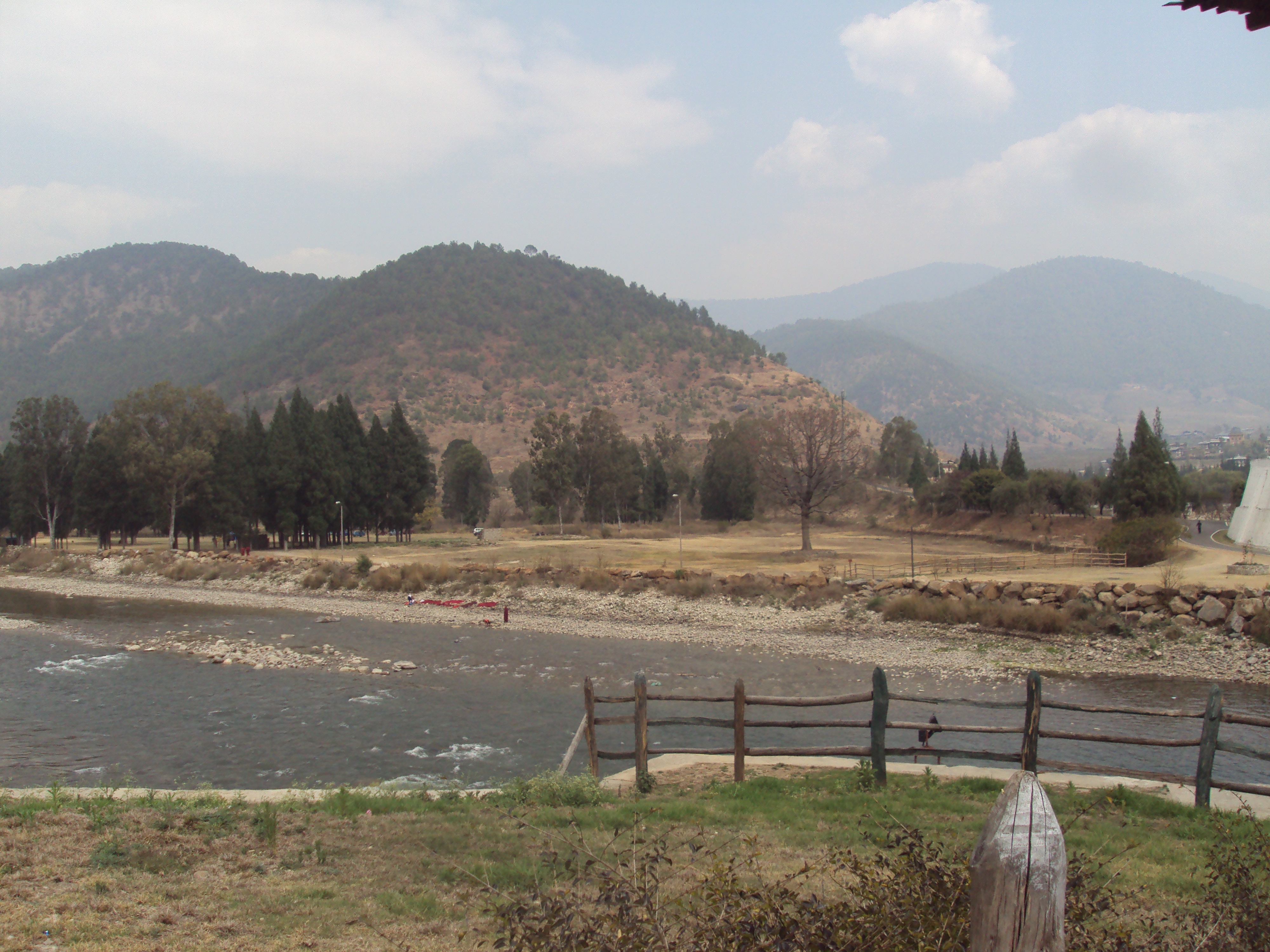
Paro is a valley town in Bhutan, west of the capital, Thimphu. It is the site of the country’s only international airport and is also known for the many sacred sites in the area. North of town, the Taktsang Palphug (Tiger’s Nest) monastery clings to cliffs above the forested Paro Valley.
Here the Paro Chu (Chu means River) flows south from its watershed in the Chomolahri range. Above it in a rocky outcrop of the sleepy hillside stands the Paro Dzong, at an altitude of just over 7000 feet, overlooking both sides of the valley this dzong was historically one of Bhutan’s strongest and most strategic fortresses. Pochhu River – Within Paro city, this river & its banks gives opportunity to see birds like Ibis bill, Brown Diper, Common Merganser, White-capped & Plumbeous Water Redstart, River Lapwing etc…
Chele La (Pass) – Altitude 3988 mtrs – A 2 hours drive from Paro will take you to Chele La pass, which is the highest motorable pass of Bhutan. At an elevation of 13000 ft, you get some mesmerizing views of the mountain and the green valley down.
Birds species to look for are Blood Pheasant and Himalayan Monal, Kalij Pheasent, Fire-tailed Sunbird, Beautiful Rosefinch, White-winged Grosbeak, Collared Grosbeak, Red-headed Bullfinch, Red Crossbill, Fire-tailed Myzornis, Fire-tailed Sunbird etc…
Punakha
This town is between Thimphu and Trongsa and is famous for its Punakha Dzong Fortress, a 17th-century fortress that is located at the junction of the Pho & Mo Chhu rivers. Though the culture, art and architecture of this place in the heart of nature are major attractions, Punakha falls under the area of the Eastern Himalayas biodiversity hotspot, making it an excellent place for bird watching.
 The surrounding forests that enclose the town are suitable habitats for hundreds of variety of rare species of birds. This town is a magnet for birders around the world who are attracted by the diversity of species in the dense forests centered in the breathtaking heavenly beauty of the summits of Himalayas. The river valleys are fertile and flourishing for birds and also attract other migratory and seasonal birds.
The surrounding forests that enclose the town are suitable habitats for hundreds of variety of rare species of birds. This town is a magnet for birders around the world who are attracted by the diversity of species in the dense forests centered in the breathtaking heavenly beauty of the summits of Himalayas. The river valleys are fertile and flourishing for birds and also attract other migratory and seasonal birds.
The Critically endangered White-bellied Heron is sometimes encountered along the Pho chu river along with Ibis Bill, Brown Dipper, Pallas’s Fish Eagle, Common Merganser, several species of ducks including an occasional Mandarin duck. The Dochula Pass @ 3750 msl and the beautiful Lampelri Botanical Gardens are great spots to see several species of birds including Fire-tailed Myzornis, Black-throated Parrotbill, Spotted Nutcracker, Red-headed Bullfinch, Brown Bullfinch, Ward’s & Red-headed Trogon, Brown Parrotbill, Rufous Sibia, Crested Kingfisher, Whiskered Yuhina, Black-faced, Chestnut-crowned, White-throated Laughingthrush, Grey-crested Tit, Ashy-throated, Black-faced, Buff-barred, Russet Bush Warblers, Spotted Nutcracker, Black-tailed Crake, Eurasian Jay, Chestnut-crowned Laughingthrush etc…
Trongsa
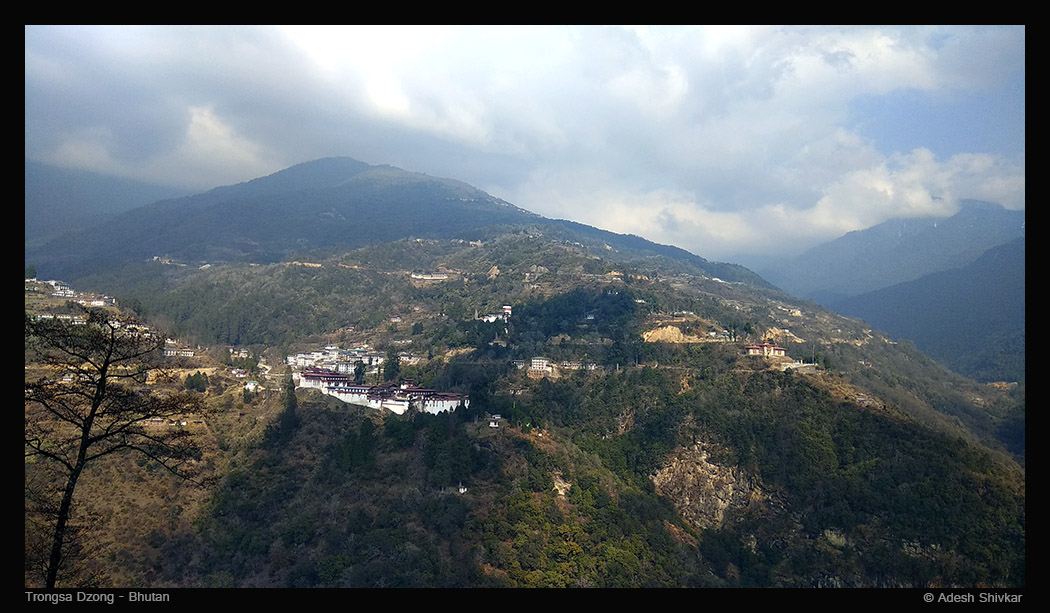
Trongsa is located smack in the middle of Bhutan, and it is enclosed by mountains on two sides. This was an important political hub when its location was a central attraction for monarchs to set their base in this region. Due to the surrounding wild green, this place is home to a lot many plants and animals. With a short drive towards Gelephu one can expect to see the rare Gee’s Golden Langur troops hanging around the fruiting trees.
The plant and animal diversity in this region is unparalleled because of careful conservation and the range of climatic conditions available for life to flourish. Falling under the Eastern Himalayan Biodiversity Hotspot and because of its central location in the country, birding is especially fun. The birds that can be encountered in this region are Himalayan Cutia, Bar-tailed Tree creeper, Brownish-flanked Bush Warbler, Spotted Forktail, Gold-naped Finch, Mountain Hawk Eagle, Common Green Magpie, Rufous Sibia, Rusty-cheeked Scimmitar Babbler, Hill Prinia, Grey-backed Shrike, Grey-bellied Tesia, Rufous-capped Babbler, Rufous Babbler etc.
Phrumsengla (Trumshinglla Valley) National Park
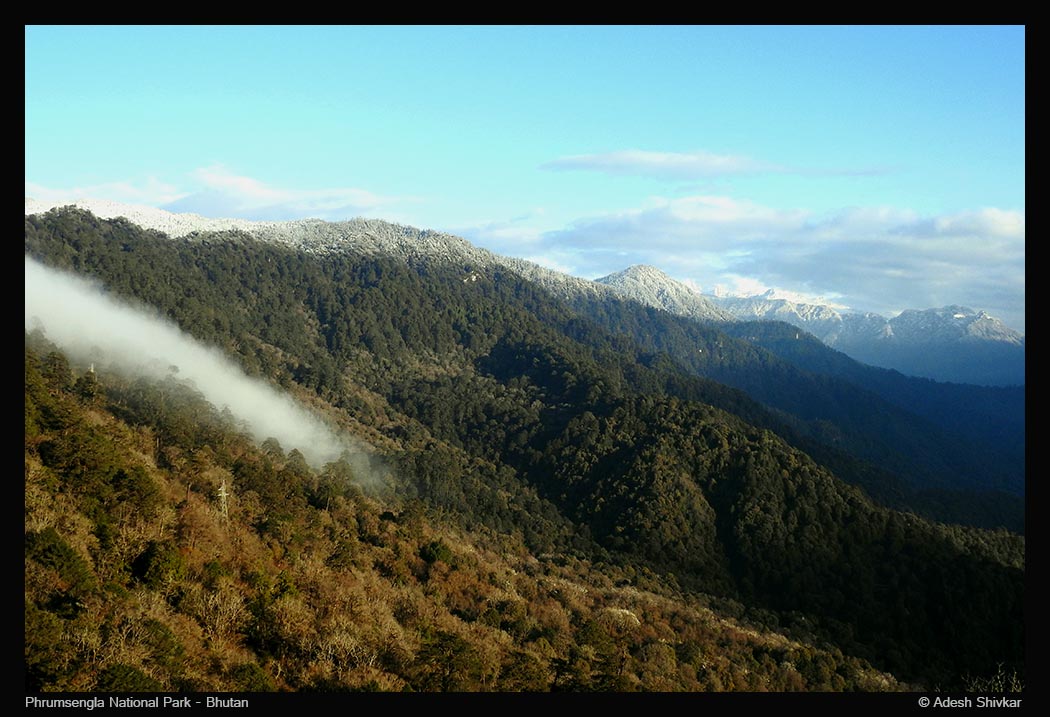
Phrumsengla is a temperate park with large tracts of old-growth fir forests, its altitudes ranging from 700 metres (2,300 ft) to 4,400 metres (14,400 ft). Phrumsengla is home to six species of threatened birds: the Rufous-necked hornbill (Aceros nipalensis), Rufous-throated wren-babbler (Spelaeornis caudatus), Satyr tragopan (Tragopan satyra), Beautiful nuthatch (Sitta formosa), Ward’s trogon (Harpactes wardi) and Chestnut-breasted partridge (Arborophila mandellii), as well as the near-threatened Wedge billed wren babbler (Sphenocichla humei). Phrumsengla has scenic views, including forests ranging with elevations from alpine to sub-tropical.
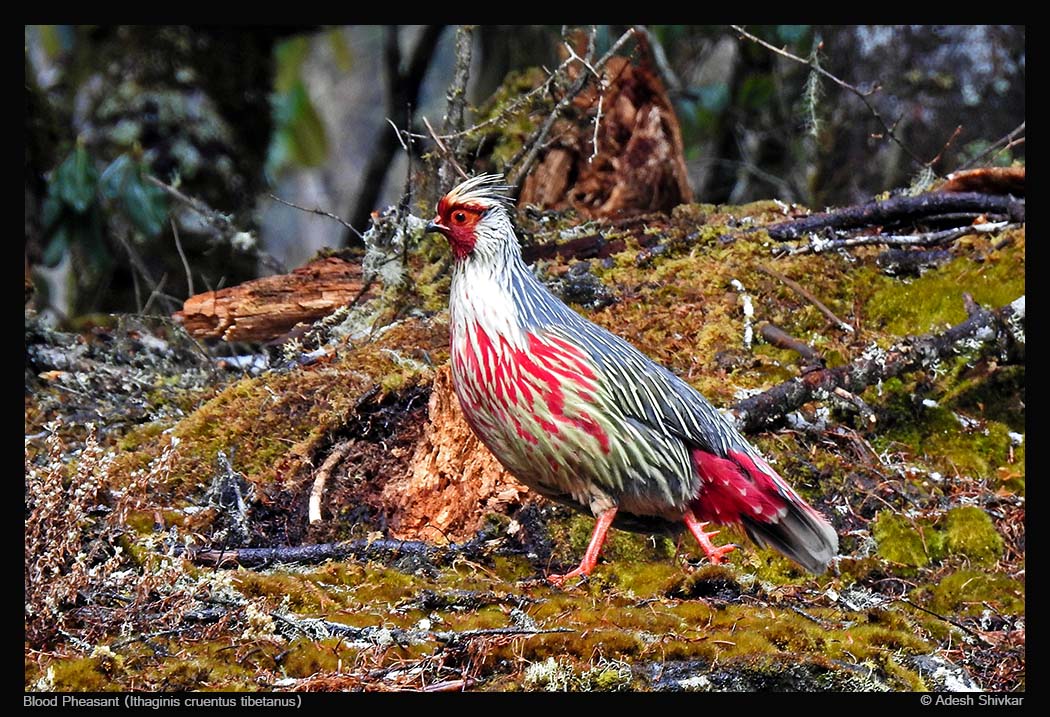
Other birds that can be encountered here are Snow Pigeons, Orange-flanked Bush Robin, Golden and White-browed Bush Robin, Fire-tailed Myzornis, Spotted Nutcracker, Red-billed Chough, Fire-tailed Sunbirds, Greats Parrotbills, Stripe-throated and Rufous-vented Yuhinas, Grey-crested & Coal Tit, Rufous-vented Tits, White-browed Fulvetta, Dark-rumped Rosefinch, Plain-backed Thrush, White-collared and Grey-winged Blackbird, Rusty-flanked Treecreeper etc.
Yongkola & Mongar
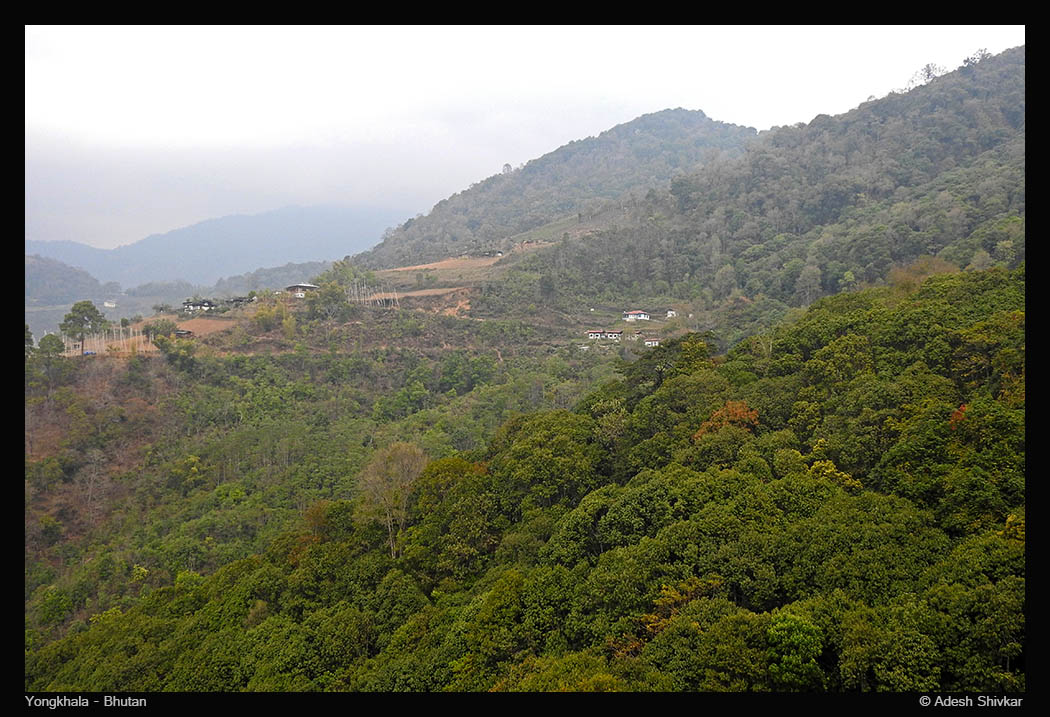
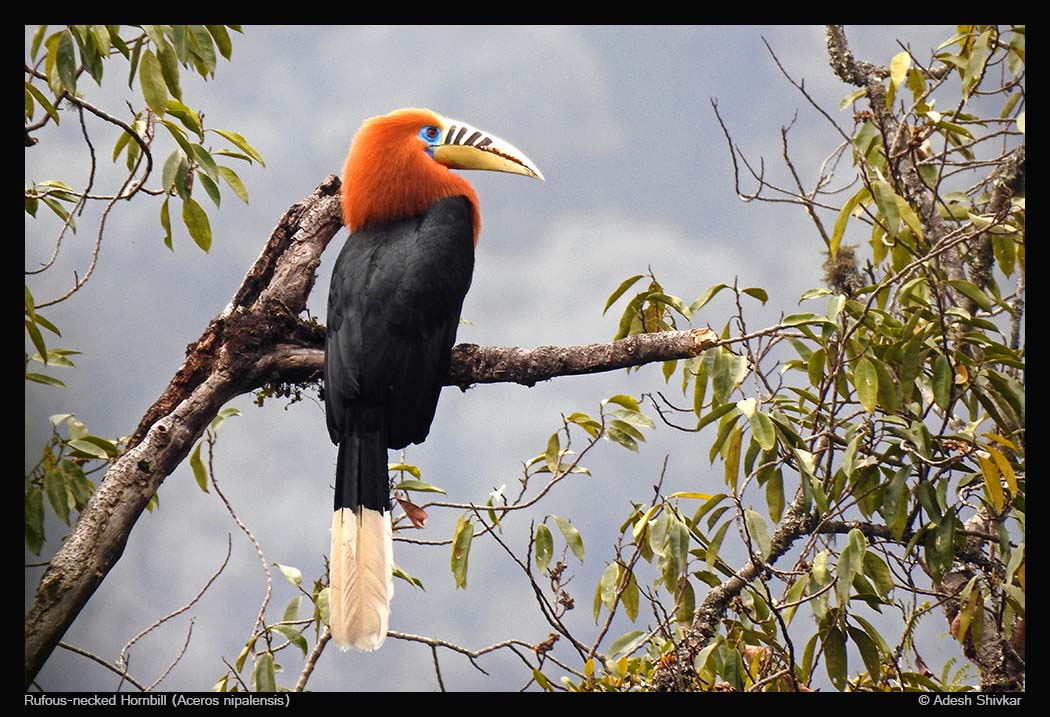
A birding excursion to Bhutan is incomplete without visiting Yonkola. This place is a hotspot for Birding in Bhutan and is located on the way to Mongar town in the eastern Bhutan hills. The quaint ambiance of Yonkola, its semi-tropical climate and the broadleaved forests make it an ideal space for birds to thrive. Birding in this region is easy and photographing birds does not take too much effort.
Other Birds that can be encountered here are Black Bulbul, Blyth’s Pipit, Bronzed Drongo, Gould’s Shortwing, Redheaded Bullfinch, Speckled Piculet, Grey Wagtail, Whitethroated Munia, Whitebrowed Blue Flycatcher, Yellowbellied Flowerpecker, Blue-bearded Bee-Eater, Parrotbills, Yellow-rumped Honeyguide, Mountain Bulbul, Lesser racket-Tailed Drongo, Yellow-bellied Fantail and Rufous-throated Hill Partridge etc
++++++++++++++++++++++++++++++++++++++++++++++++++
ITINERARY & COMPLETE TRIP DETAILS
Mode of Local Travel: AC Toyota Coaster from Bagdogra Airport to Guwahati Airport
Suggested Flight Booking:
Mumbai / Delhi to Guwahati
12th May, 2024 – Any flight reaching Guwahati on 12th May (our tour starts on 13th May early morning)
Bagdogra to Mumbai / Delhi
23rd May, 2023 – Any flight on 23rd May after 13:00 Hrs (we reach Bagdogra airport by 11:30 am)
OR
Train from New Jalpaiguri (Or earlier station) to Kolkata….. and to respective destination
Tour Itinerary (Guwahati Airport to Bagdogra Airport):
Day 1: 13th May, 2024 (Monday): Pick-up from Guwahati Early morning and drive (2.5 Hrs) to Samdruk-Jonkhar (Bhutan border town) 104 Kms …… transfer in another vehicle ….. Complete the Permit formalities and proceed towards Dewathang for birding ….. lunch and continue birding till evening. Check-in hotel in Dewathang …. Dinner …….. Overnight stay at Hotel in Dewathang
We leave Guwahati along busy roads packed with cars, street hawkers and rickshaws, cross the Brahmaputra River, and continue across the plains of Assam. We look out for Cormorants, Black-billed Rollers, River Lapwings, White-tailed Stonechat, Ashy Drongo, Striated Babblers etc along roadside wetlands, we’ll also make our effort to find lesser and Greater Adjutants. We enter Bhutan by late morning, complete the immigration process at the border, and enter the town of Samdrup Jongkhar from where we proceed to Dewathang. In the evening birding around Dewathang looking for the species like Great and Wreathed Hornbill, Long-tailed Broadbills, Long-tailed Sibia, Asian Fairy Bluebird, Indian Roller, Pin-tailed Green Pigeon and many more.
Day 2: 14th May, 2024 (Tuesday): Early morning Start birding and explore the Dewathang and surrounding area for the entire day – Return for lunch in Hotel and continue birding …. Overnight stay at Hotel in Dewathang
The forest patches and small stands of bamboo around the Samdrup Jongkhar / Dewathang hosts a number of lowland species Like Beautiful Nuthatch, Black-crested Bulbul, Red-headed Trogon, Wreathed, Oriental Pied and Great Hornbills, Mountain Hawk- Eagle, Mountain Imperial Pigeon, Thick-billed Green Pigeon, Rufescent Prinia, Black-naped Monarch, Scarlet Minivet, Ashy and Black Bulbuls, Blue-winged Leafbird, White-rumped Shama, Sultan Tit, Asian Fairy-bluebird and Long-tailed Broadbill we’ll also be looking for the Black-backed Forktail along the rocky streams.
Day 3: 15th May, 2024 (Wednesday): Start early morning with packed breakfast towards Trashigang (152 kms)- Lunch on the way – Stay at Trashigang or Nearby (Hotel Lingkhar Lodge) @3200m
After birding in the lower regions of Dewathang, we travel towards Trashigang. Our journey continues through valleys and over mountain passes to Yonphu La at 2,570m stopping along this section should produce, Crimson-breasted & Darjeeling Woodpecker, Little Pied and Ultramarine Flycatchers, Golden Babbler etc. The road ascends quite steeply through dense sub-tropical broad-leafed forest – a wildlife paradise where we look in particular for the rare, Rufous-necked Hornbill (globally vulnerable), Lesser Cuckoo, Blue-winged Laughingthrush, Long-tailed Broadbill, and Asian Barred Owlet….
Day 4: 16th May, 2024 (Thursday): Start early morning with packed breakfast towards Yonkhola (120 kms)…. Overnight stay in hotel at Yongkhola (Hotel Trogon Villa) @ 2100m
On the way to Yonkhola, explore the wonderfully rich, warm broad-leafed forests of Lingmethang road where we hope to find, Rufous-bellied Eagle, Asian Barred Owlet, Asian Emerald Cuckoo, Grey-headed Woodpecker, Greater Yellownape, Maroon Oriole, Streaked Spiderhunter, Lesser Racket-tailed and Hair-crested Drongos, White-throated Fantail, Grey Treepie, Grey-bellied Tesia, Striated Prinia, Rufous-capped and Golden Babblers, Grey-headed and Greater Rufous-headed Parrotbills, Mountain and Striated Bulbuls, Brown-throated Treecreeper, Rufous-bellied Niltava, Grey-cheeked and Black-faced Warblers, Dark-sided, Snowy-browed and Sapphire Flycatchers.
We pass through Kore-la @ 2450m along which we will look for birds such as, Ward’s Trogon, Hill Partridge, Grey-sided Laughingthrush, the fantastic Scarlet Finch, White-collard Blackbird, Fire-capped Tit, Black-chinned Yuhina, Rufous-winged Fulvetta, Brown-flanked Bush Warbler, Chestnut-crowned Warbler, Dark-sided Flycatcher and Grey-headed Canary Flycatcher. We shall then ascend to the Sheri Chhu valley through 10 hairpin bends, known as the Yadi Loops, in just 10 km!
Day 5: 17th May, 2024 (Friday): Full day birding around Yongkola (30 kms) … Lunch – Continue birding … Overnight stay in hotel at Yongkhola (Hotel Trogon Villa) @ 2100m
The areas of Yongkola, Namling and Lingmethang are considered to be one of the finest birding locations in the world and one of the best birding areas in the Himalayas. We will comb the lush forested valleys in order to track down Rufous-necked Hornbills, Ward’s Trogons, Golden-throated Barbets, mixed parrotbill flocks, Collared Treepies, Slender-billed Scimitar-Babblers, Black-headed Shrike-babblers, Golden-breasted Fulvettas, Scarlet Finches etc. We have enough time to explore the pristine forests of Thrumshing La national park using a paved yet rarely used road and we explore for more bird species including Chestnut-breasted Partridge, Yellow-throated Fulvettas, Gould’s Shortwing, Sikkim Wedge-billed Babbler, Long-billed and Rufous-throated Wren Babblers, Coral-billed Scimitar Babbler, Himalayan Bluetail, Golden Bush Robin, Spotted Elachura, Broad-billed, Chestnut-crowned and Whistler’s Warblers, Nepal House Martin (big colony of nests on a overhanging cliff near Namling waterfall), Crimson-breasted Woodpecker, Black Bulbul, Scaly and Bhutan Laughingthrushes, Orange-bellied Leafbird, Yellow-bellied fantail, Rusty-fronted Barwing, Lesser Shortwing, Slaty-bellied Tesia, Scaly Thrush, Mountain Tailorbird, Yellow-cheeked Tit, and White-gorgeted Flycatcher etc.
Day 6: 18th May, 2024 (Saturday): Proceed from Yonkhola towards Bhumtang (150 kms) – birding on the way – Stay at Bumthang (Hotel River Lodge) @ 2800m
Leaving Yokhola we climb through forests of larch, silver fir, spruce and towering hemlocks, until Thrumshing La (pass) at 3,780m, here we will begin to explore this magnificent forests road where we have our opportunity to see the stunning, Blood Pheasants as feed by the road side in the mist and where, once more we have breath-taking views of the Eastern Himalayas. towards the pass we drive from the nomadic village of Sengor (3050m). Along these high altitude road we will be looking for some of Bhutan’s highly prized birds such as the Satyr Tragopan, Great Parrotbill, Slender-billed Scimitar Babbler, Speckled Wood Pigeon, Alpine Thrush, Hoary-throated Barwing, other species in the area include, Yellow-billed Blue Magpie, Green Shrike Babbler, flocks of Whiskered Yuhinas, Coal and Grey-crested Tits, Large-billed Leaf Warbler, Fire-breasted Flowerpecker and the Bar-throated Siva (previously known as Chestnut-tailed Minla).
Along here one can also hope to see another top attraction for Bhutan the localized Bar-winged Wren Babbler.
Day 7: 19th May, 2024 (Sunday): Proceed from Bumthang towards Trongsa (80 kms) with packed breakfast – birding on the way – Stay in Trongsa (Hotel Yangkhil) @ 2200m
Today we drive towards Bhumtang and gradually make our way through Yotong La Pass (3,450m) through magnificent rhododendron and magnolia forests. The birds that we can encounter along this route include, Besra, Steppe Eagle, Plaintive Cuckoo, Hodgson’s Redstart, White-capped Water Redstart and, Rufous-gorgeted Flycatchers, Black-billed Magpie (only found in Bumthang valley), Brown Parrotbill, Chestnut-headed Tesia, Indian Blue Robin, Yellow-bellied Flowerpecker, Goldcrest, Winter Wren, Russet Bush Warbler, Red-throated Thrush, Yellow-breasted Greenfinch. From the pass we descend through conifer forests to the upland valley of Chumey.
By noon we will drive up to the nearby Tharpaling monastery to take another chance to see the spectacular Himalayan Monal, as they feed on the left over food thrown by the monks. The birds have now become accustomed to this practice. Other birds in the area include Snow Pigeon, Large-billed Crow and Altai Accentor.
Day 8: 20th May, 2024 (Monday): Travel from Trongsa towards Punakha (135 kms) … Lunch on the way… Overnight stay at Hotel in Phunaka (Hotel Damchen) @ 1250m
Punakha is one of the lowest places in this part of Bhutan (@ 1250m) and has a subtropical climate. Following an old trail along the bank of the Mo Chhu river, explore its bank and surrounding vegetation. This area is renowned for the critically endangered White-Bellied Heron. Further up the road, pause to see the impressive Punakha Dzong, arguably the most beautiful dzong (a kind of fortress) in Bhutan. Then make your way into the forests of the upper Punakha Valley to try for Bay Woodpecker, Red-headed Trogon, Wedge-Tailed Pigeon, White-Gorgeted Flycatcher, Yellow-vented Warbler, Green Magpie, Osprey, River Lapwing, Ruddy Shelduck, and Eurasian Wigeons. Keep an eye out for a variety of skulkers that also call this region home, including the Spotted Elachura and Pygmy Wren-Babbler.
The valley widens, affording us dramatic views of the Wangdue Phodrang Dzong, which is stretched along a ridge above the river…. crosses over the Black Mountains dividing western from central Bhutan at 3,420 meters. We then explore the area of temperate broadleaved forest and bamboo understory where targets include the striking Golden-breasted Fulvetta, Black-throated Parrotbill and the very uncommon Brown Bullfinch. As we begin our descent down the Pele La we may encounter the Wallcreeper that forages along the impossibly steep cliffs and gorges as well as the gregarious Snow Pigeon. Other species to search for here include Great Parrotbill, which prefers stands of rhododendron and bamboo, Golden Bush Robin, Long-tailed Minivet, Green-tailed Sunbird and the skulky Grey-sided Bush Warbler in thick grasses. The top of the pass may yield White-winged and Collared Grosbeaks as well as Himalayan Vulture soaring overhead.
Day 9: 21st May, 2024 (Tuesday): Travel early morning from Punakha towards Paro (115 kms) – on the way birding in Dochu La pass and Lhamperi Botanical garden… Lunch on the way… Overnight stay at Hotel in Paro (Hotel Rema resort).
We shall leave early in order to see the high Himalayas as dawn breaks over Dochu La at 3,150m. It is an awe-inspiring sight, where prayer flags flutter in the breeze and 108 white chortens greet us!
Exploring the mixed broad-leafed forests at Dochu La, we should find an incredible wide range of birds which may well include, Hodgson’s Hawk Cuckoo, Darjeeling Woodpecker, Rufous-vented Tit, Buff Barred Warbler, Streak-breasted Scimitar Babbler, Chestnut-crowned and Grey-sided Laughingthrushes, Rufous Sibia, White-collared Blackbird, White-browed Shortwing, Slaty Blue Flycatcher, Green-tailed Sunbird and Olive-backed Pipit. Continuing to Lhamperi we will explore the Royal Botanical Park where we may find, Hill Partridge, Eurasian Jay, Rufous-bellied Woodpecker, Red-billed Leiothrix, Fire-capped Tit, Blue-fronted Redstart, Verditer Flycatcher, White-throated Laughingthrush, Dark-breasted Rosefinch, Scarlet Finch, Green-backed Tit etc. Rufous-bellied Woodpecker, Black-winged Cuckooshrike, Grey-winged and White-collared Blackbirds, Chestnut-headed Tesia, Ultramarine Flycatcher, Sikkim Treecreeper, scarce Spot-winged Grosbeak, Snowy-browed Flycatcher and the shy Hill Partridge.
The higher slopes of the scenic Dochu La also harbour some excellent birds like the radiant-green Fire-tailed Myzornis, Yellow-billed Blue Magpie, White-browed Fulvetta and Spotted Nutcracker and if we are very lucky then Fulvous Parrotbill.
Day 10: 22nd May, 2024 (Thursday): Start early morning for Chele La (Pass) (high altitude birding) with packed breakfast… Lunch in Paro …. Proceed to Phuentsholing (140 kms) – birding on the way Full day birding in and around Paro….. Overnight stay at Hotel in Phuentsholing
We will have an early start for our journey through ancient high boreal forests to Chele La at 3,900m, the highest point of our tour. Arriving at the pass there are breathtaking views of the high Himalayan peaks of Jhomolhari (7,219m), Jichu Drake (6,989m) and down into the Paro and Ha valleys. Amongst the many regular birds we will search in particular for the vibrant Himalayan Monal, Blood Pheasants (often feeding along the roadsides), a chance to see Satyr Tragopan, Coal Tit, Himalayan Cuckoo, Rufous-fronted and Yellow-browed Tits, Greenish Warbler, Red-tailed Minla, White-browed Fulvetta, Hodgson’s Treecreeper, Black-throated and Dusky Thrushes, Blanford’s and Himalayan White-browed Rosefinches, Collared and Whitewinged Grosbeak, White-throated Redstart, White-browed Bush Robin, Alpine Accentor, Plain Mountain Finch (often seen in big flocks), Red-headed Bullfinch, Spotted Laughingthrush, Goldcrest, Darjeeling Woodpecker etc….
Also Olive-backed Pipit, Dark-rumped Rosefinch, Yellow-bellied Fairy Fantail, Indian Blue Robin, Large-billed Warbler, Blyth’s Leaf Warbler, Northern Goshawk.
We also (for a short while) explore the marshes long the Pa Chhu river, where camouflaged amongst the glacial stones, Himalayan riverine species such as the Ibisbill, Brown Dipper, Common Snipe, Common & Green Sandpipers, Grey-backed Shrike, Russet Sparrow, Rosy Pipit, Rufous-breasted Accentors and Wallcreeper can be seen.
Day 11: 23rd May, 2024 (Tuesday): Proceed to Bagdogra Airport (155 kms) – Breakfast on the way – birding on the way – reach Bagdogra Airport by 11:00 am to proceed to respective destinations.
There might be slight changes in the above itinerary depending on the sightings during the season…..
Total seats: 8 Pax +1 only
Trip charges: Rs.1,05,000/- (Guwahati Airport to Bagdogra Airport only)….
Includes Stay in hotels on a twin sharing basis (Mostly 3 star hotels) for 10 days , Travel in AC Toyota Coaster from Guwahati Airport to Bagdogra Airport, Local guide charges, Delicious Vegetarian / Non-vegetarian food, Articles on Bhutan, Bird checklist, on board mineral water and snacks……
This does NOT include the SDF (Sustainable Development Fees) that have been introduced recently @ Rs.1200/- per day per person; NOR any Monument charges like Monestaries/Dzongs, Museums etc (participants have to pay these charges separately on the spot); Airfare from Mumbai/Kolkata/Delhi to Bagdogra & back; Guwahati stay charges (12th May’24); Mineral bottled water or any other charges or camera charges ….Individuals will have to pay additional charges if any to the forest dept. as per the rules.
Stay Arrangments:
Registration:
You can register by sending a confirmatory mail to natureindiatours@gmail.com and by paying a non refundable Advance of Rs.40000/- …..(The seats will only be confirmed after receiving the advance amount & our registration confirmation by email) …..the remaining amount can be forwarded in installments before the trip (Installment Details shall be given during along with the registration email)…….Please Register soon to get the confirmed seat the desired class of travel.
Resource Persons:
A Local expert along with Mr.Adesh Shivkar
Important Travel Note: You need either an Indian Passport or Voter ID card to enter Bhutan…..these are the only 2 valid documents that are accepted here.
Mode of Payment: You can either
2) Courier a cheque of Rs.40000/- as advance amount to the following address
Address: (Will be provided along with Registration mail)
Please Note:
- Once registered, the advance amount of Rs. 40000/- is strictly non-refundable
- Alcohol & Smoking is strictly prohibited on Nature India Tours
- Nest photography or any collection of specimens is prohibited
- Kindly register on this trip only if you agree with Nature India‘s rules and policies
http://natureindiapolicies.blogspot.in/2012/08/nature-india-policies.html
Please contact us, in case you need any clarification …..
Hope to see you for this wonderful trip !!
Thanks for your patience.
Warm Regards,





























































